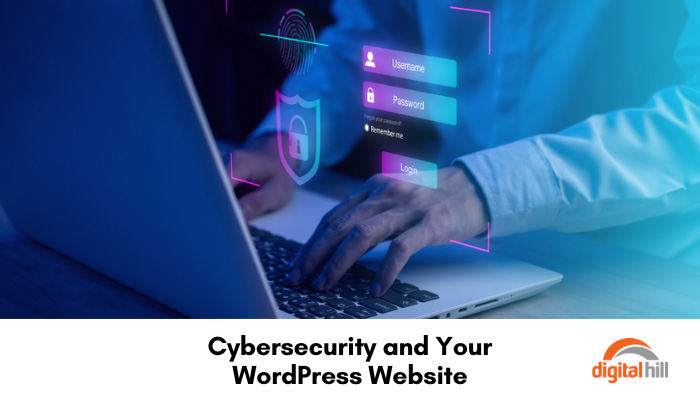Cybersecurity of Your WordPress Website

Now more than ever, website security is paramount. WordPress, one of the most popular content management systems (CMS), is often a target for cyber threats. This guide provides comprehensive strategies to help you enhance the cybersecurity of your WordPress website, ensuring it remains secure and reliable in the current digital age.
1. Keep WordPress and Plugins Updated
Regularly updating your WordPress core, themes, and plugins is crucial to your security. This is because developers continuously release updates to patch security vulnerabilities. Neglecting updates can leave your site exposed to threats that these patches are designed to fix.
2. Use Strong Passwords and User Permissions
Implement strong, unique passwords for your WordPress admin area, FTP accounts, and database. Try to avoid using default usernames like ‘admin’. Additionally, be mindful of the user roles and permissions you assign to users. Always try to limit the number of users with administrative access to reduce potential entry points for hackers.
3. Implement Two-Factor Authentication (2FA)
The implementation of two-factor authentication adds an extra layer of security by requiring a second form of identification beyond just a password. This can be a text message, a phone call, or an app notification. Make sure all administrators on your website use this feature to minimize the risk of attacks.
4. Choose a Secure Hosting Provider
Your hosting provider plays a significant role in your site’s security. Opt for a provider known for its emphasis on security features, such as regular backups, firewalls, and malware scanning. A secure hosting site can make a big difference to your website security. Contact Digital Hill today for a quote.
5. Regularly Backup Your Site
Backups are your safety net. Regularly back up your entire WordPress site, including your database. This way, if something goes wrong, you can restore it to a functioning state. Consider automating backups to ensure they are performed consistently.
6. Use Security Plugins
Security plugins enhance your website’s security through features like regular scans for malware, monitoring suspicious activity, and blocking brute force attacks. Popular options for additional security include Wordfence, Sucuri, and iThemes Security.
7. Enable SSL/HTTPS
Secure Socket Layer (SSL) encryption is essential for protecting data transfer between user browsers and the server. This is especially important for eCommerce sites. Most hosting providers offer free SSL certificates.
8. Harden WordPress Security
Harden your WordPress site by restricting file permissions, disabling file editing via the dashboard, securing the wp-config.php file, and changing the WordPress database table prefix.
9. Monitor Your Site Regularly
Regular monitoring of your website can help you detect unusual activity early on. Check for any unexplained changes to your website, unusual traffic spikes, or unknown users or admin accounts.
10. Educate Yourself and Your Team
Stay informed about the latest cybersecurity threats and trends. Educate anyone involved in your website about best security practices, like recognizing phishing attempts and securing personal devices.
11. Limit Login Attempts
Limit the number of login attempts to your site from a single IP address. This reduces the risk of brute force attacks, where hackers try numerous password combinations to gain access. Additionally, you can get alerts about these threats and encourage users to update their information.
12. Use a Web Application Firewall (WAF)
A WAF can block malicious traffic before it reaches your site. It filters, monitors, and blocks HTTP traffic to and from a web application to protect against attempts to compromise the system.
13. Regularly Scan for Vulnerabilities
Regularly use tools to scan your website for vulnerabilities. This can help you identify and fix security weaknesses before they are exploited by attackers.
14. Clean and Optimize Your WordPress Site
Keep your WordPress site clean by deleting unused themes and plugins. A cluttered website can have hidden vulnerabilities. Regularly optimize your database to enhance performance and security.
15. Stay Up to Date with WordPress Security News
Follow blogs, forums, and news sources that focus on WordPress security. This will keep you informed about new vulnerabilities and security updates.
While WordPress is a robust and user-friendly platform, it requires ongoing attention to security. Implementing these strategies will greatly reduce the risk of cyber threats and ensure your WordPress website remains secure, fast, and reliable. Remember, the cybersecurity of your WordPress website is a continuous process, not a one-time deal. Regularly review and update your security measures to adapt to the ever-evolving digital landscape.